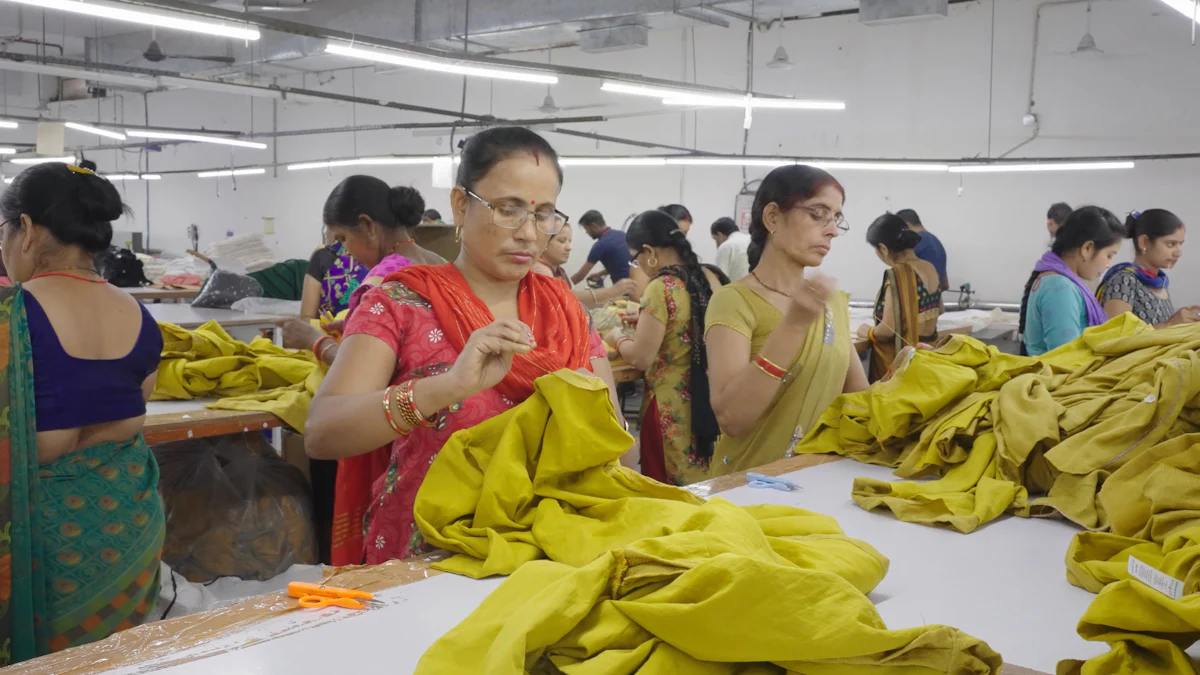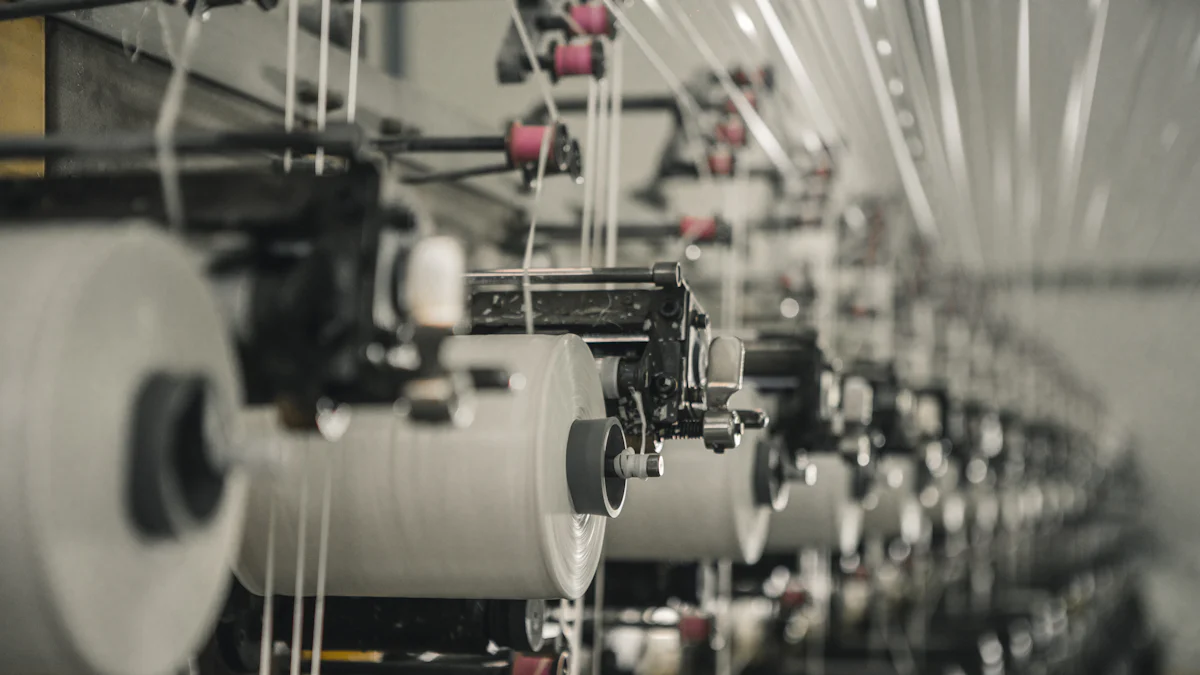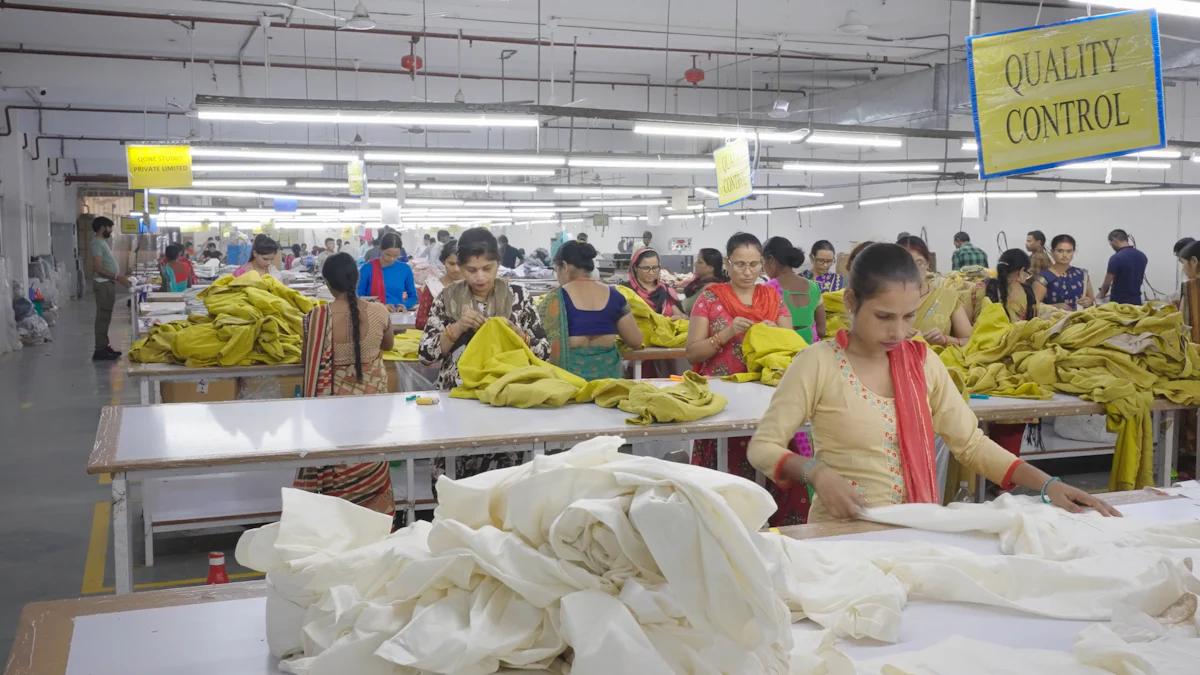
When I explored a Cambodia bag factory, I noticed key differences in quality, pricing, and certifications. For example, one factory followed ISO9001 standards, ensuring consistent quality. WRAP certification also reflected their ethical practices. However, bags like cosmetic bags and women bags cost about 7% more than in China due to labor inefficiencies and material sourcing challenges. Additionally, the factory produced various types of storage bags, showcasing their versatility in the market.
Key Takeaways
- Cambodian bag factories meet ISO9001 and WRAP rules for quality and ethics.
- Materials come from China, which changes costs and bag strength. Logistics are important.
- Cambodia’s prices are 7% more than China’s, but offer faster payments and steady orders.
Quality Comparison of Cambodia Bag Factories

Materials and Their Impact on Quality
When I visited a Cambodia bag factory, I noticed that the materials used played a significant role in determining the quality of the bags. Factories often source bulk materials and hardware from mainland China. This sourcing impacts both the cost and the durability of the final product. Here’s a quick breakdown:
| Material Type | Source | Impact on Quality |
|---|---|---|
| Bulk Materials | Mainland China | Influences cost and logistics of handling materials |
| Hardware | Mainland China | Affects durability and overall product quality |
The choice of materials directly affects the bag’s lifespan and appearance. Factories that prioritize high-quality materials tend to produce more durable and visually appealing products.
Craftsmanship and Durability Standards
The craftsmanship in Cambodian factories impressed me. Many factories follow ISO9001 standards, ensuring consistent quality. Some also hold WRAP certifications, which highlight their ethical practices. These certifications reflect their commitment to high manufacturing standards.
- The factory I visited had ISO9001 certification for quality assurance.
- It was also WRAP-certified, ensuring ethical practices and workforce welfare.
These standards ensure that the bags meet durability expectations. For instance, I saw bags designed to withstand heavy use without tearing or losing shape. This level of craftsmanship makes Cambodian factories a reliable choice for businesses seeking durable products.
Quality Control Practices in Factories
Quality control is another area where Cambodian factories excel. I observed several practices that ensure consistency across production batches. These include:
| Quality Control Practice | Description |
|---|---|
| Pre-Shipment Inspections (PSI) | Evaluates product quality, quantity, and packaging before shipment. |
| In-Process Inspections (IPI) | Monitors quality during manufacturing to identify and fix defects early. |
| First Article Inspections (FAI) | Examines the first production unit to ensure it meets specifications before mass production. |
| Container Loading Supervision (CLS) | Ensures proper handling during transportation to prevent damage. |
| Sorting Service | Categorizes products post-production to isolate defects and ensure high-quality items. |
These practices ensure that every bag meets the required standards before reaching customers. I found this level of attention to detail reassuring, especially for businesses that prioritize quality.
Pricing Analysis of Cambodia Bag FactoriesLabor Costs and Their Role in Pricing
Labor costs play a significant role in determining the pricing of bags in Cambodia. I discovered that Cambodia has the second-lowest minimum wage in Southeast Asia, set at $190 per month in 2020. This is almost half the minimum wage in major Chinese cities like Beijing and Shanghai, where wages range between $311 and $350. While lower wages might suggest cost savings, Cambodia’s smaller labor force of just over 9 million people limits its production capacity compared to neighboring countries like Thailand and Vietnam. These factors influence the overall pricing structure of Cambodian bag factories.
Material Sourcing and Cost Variations
Material sourcing significantly impacts the cost of bags. Cambodian factories rely on raw materials and hardware imported from mainland China. This dependency increases shipping costs and affects lead times. I noticed that the average price of bags produced in Cambodia is about 7% higher than in China. This difference stems from logistics challenges and production inefficiencies. Here are some key factors I observed:
- Raw materials and hardware come from China, raising shipping expenses.
- Labor wages are lower, but inefficiencies in the workforce offset these savings.
- Production costs are influenced by slower ramp-up times due to less experienced workers.
These factors make material sourcing a critical consideration when evaluating a Cambodia bag factory.
Order Volume and Its Effect on Pricing
Order volume directly affects pricing in Cambodian factories. Higher order volumes are often required, which impacts pricing structures. For example, minimum order quantities (MOQs) for products like PU handbags tend to be higher. This reflects the factories’ focus on high-volume production. I also noticed that the average price of bags remains about 7% higher than in China, partly due to inefficiencies and logistics costs. Businesses placing larger orders may benefit from better pricing, but smaller orders might not yield the same cost advantages.
Certifications and Standards in Cambodia Bag Factories

Why Certifications Matter
Certifications play a vital role in ensuring the credibility and reliability of a Cambodia bag factory. When I evaluated factories, I noticed that certifications like ISO9001 and WRAP not only guarantee quality but also reflect ethical practices. For example, ISO9001 ensures that factories maintain high standards of quality and consistency. WRAP certification, on the other hand, highlights a factory’s commitment to ethical manufacturing and workforce welfare. These certifications give businesses confidence in the products they source and the conditions under which they are made.
Common Certifications (ISO, WRAP, BSCI, SMETA)
During my visits, I observed that Cambodian factories often hold certifications that align with international standards. Here’s a quick overview of the most common ones:
| Certification | Importance |
|---|---|
| ISO9001 | Ensures high standards of quality and consistency. |
| WRAP | Emphasizes ethical practices and workforce welfare. |
Other certifications like BSCI and SMETA focus on social responsibility and ethical sourcing. These certifications help factories meet global expectations, making them more appealing to international buyers.
Comparing Factory Compliance with Standards
Compliance levels among Cambodian factories vary. The Better Factories Cambodia (BFC) program monitors labor conditions and requires participation for export licenses. However, I learned that transparency in BFC reporting has fluctuated over the years. While BFC now names non-compliant factories every three months, some brands still fail to ensure full supply chain transparency. Compared to other countries, Cambodia uses BFC, while nations like Vietnam and Indonesia rely on the IFC-ILO Better Work Program. This difference impacts how compliance is perceived globally.
| Country | Program/Model Used |
|---|---|
| Cambodia | Better Factories Cambodia (BFC) |
| Vietnam | IFC-ILO Better Work Program |
| Indonesia | IFC-ILO Better Work Program |
Certifications and compliance programs ensure that factories meet international standards, but businesses must still verify individual factory practices.
Pros and Cons of Sourcing from Cambodia Bag FactoriesKey Advantages of Cambodian Manufacturing
When I explored the benefits of sourcing from a Cambodia bag factory, I found several compelling reasons to consider this option. Cambodian factories often offer shorter payment terms compared to those in China. This can significantly improve cash flow for businesses, especially small and medium enterprises. I also noticed that factories in Cambodia maintain stable production orders throughout the year. They avoid using subcontractors, which ensures consistent quality and reliability.
Another advantage is the growing demand for production in Cambodia. This demand often exceeds supply, so early booking of production capacity becomes essential. While prices in Cambodia are 5-10% higher than in China, I believe this reflects the added logistics costs and inefficiencies rather than a lack of competitiveness. For example, Orient Bag successfully expanded its operations to Cambodia in 2023, establishing Inspiror Bag (Cambodia) Manufacturing Co., Ltd. This move highlights the potential for businesses to thrive by sourcing from Cambodian factories.
| Metric | Value |
|---|---|
| Number of manufacturers | 2,198 |
| Number of exporters | 2,198 |
| Total export shipments | 81,397 |
| Growth rate of bag exports | 33% |
Challenges and Limitations to Consider
Despite the advantages, sourcing from Cambodian factories comes with challenges. Language and cultural barriers can create misunderstandings during negotiations or production planning. I’ve seen how these issues can complicate communication and delay timelines. Quality control also varies among factories, making it essential to vet suppliers thoroughly.
Logistics and shipping difficulties often arise due to Cambodia’s infrastructure limitations. These delays can disrupt supply chains, especially for time-sensitive orders. Intellectual property concerns also pose risks. Businesses must ensure their designs and trademarks are protected to avoid counterfeit products. Lastly, verifying ethical standards remains critical. Labor rights and working conditions require close monitoring to align with global expectations.
While Cambodia offers unique opportunities, addressing these challenges is vital for a successful partnership with a factory.
Cambodia bag factory options cater to diverse business needs. I recommend evaluating priorities like cost, quality, or ethical sourcing. Labor costs are low, but reliable suppliers can be hard to find. Factory audits and tools like the Better Factories Cambodia program help ensure compliance. Thorough research ensures alignment with your goals.
FAQ
What types of bags do Cambodian factories specialize in?
I noticed Cambodian factories excel in producing handbags, cosmetic bags, and storage bags. They also manufacture backpacks and eco-friendly tote bags for global markets.
How can I ensure a factory meets ethical standards?
I recommend checking certifications like WRAP or BSCI. Visiting the factory or using third-party audits also helps verify ethical practices.
Are Cambodian factories suitable for small order volumes?
Most factories prefer high-volume orders. However, I found some willing to accommodate smaller orders, especially for long-term partnerships or niche products.
Tip: Always confirm minimum order quantities (MOQs) before committing.
Media Contact
Company Name: Ningbo Tianhou Bag Co., Ltd.
Email: Send Email
Phone: 86-15888055568
Country: China
Website: https://www.tianhoubags.com/

